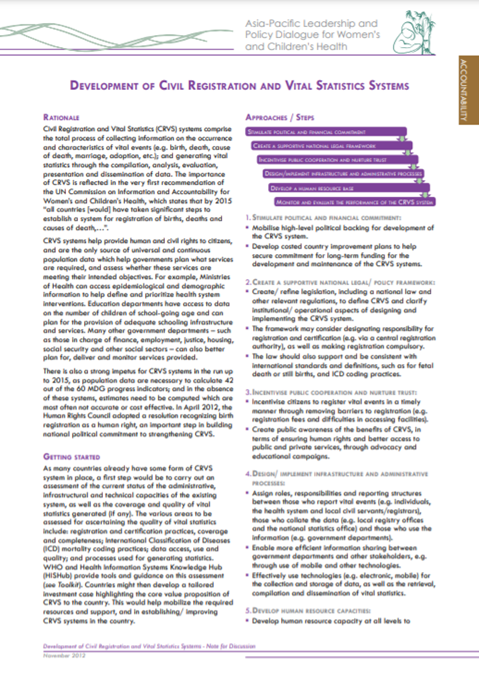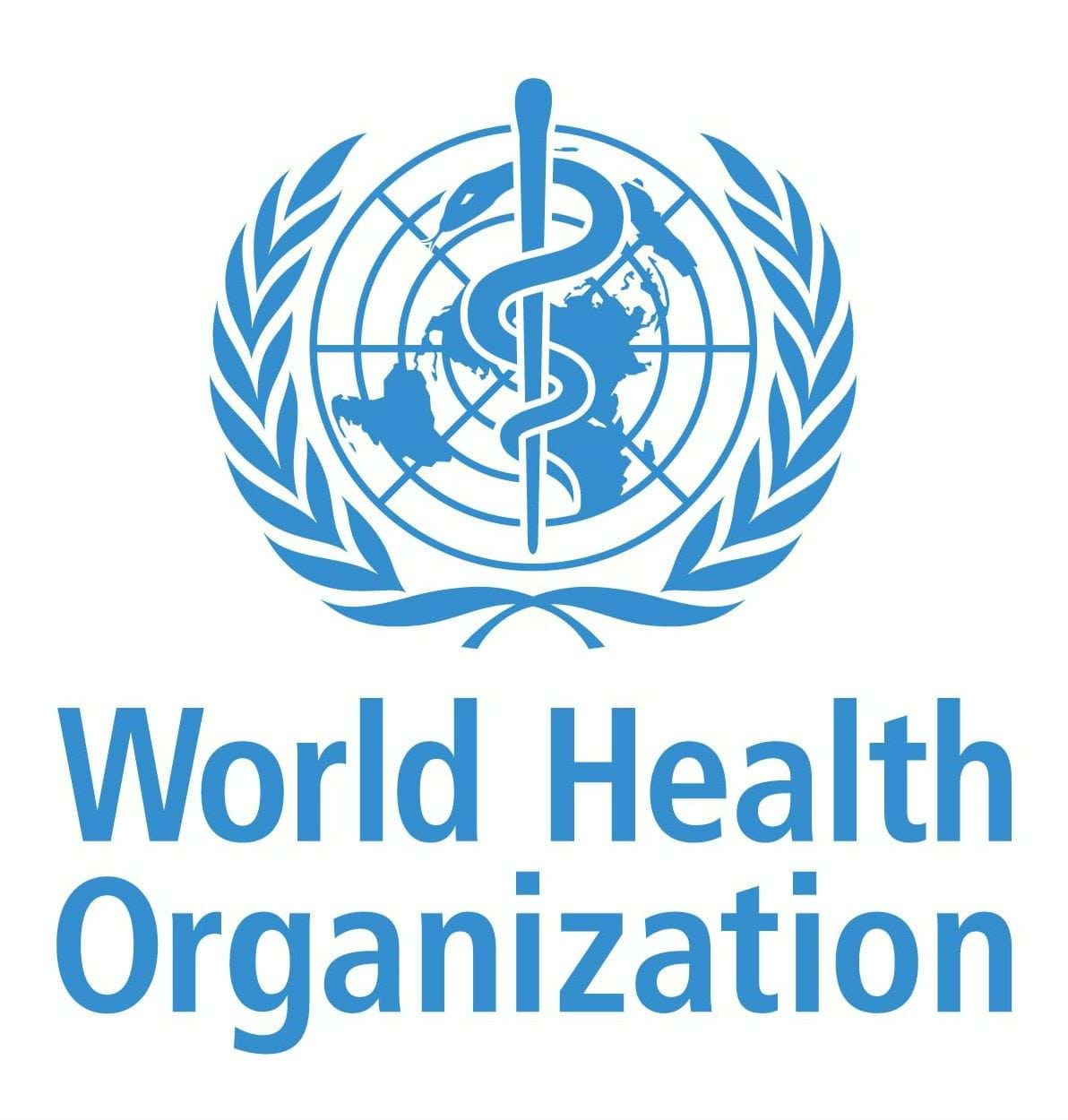Development of civil registration and vital statistics systems

Overview
Rationale
Civil Registration and Vital Statistics (CRVS) systems comprise the total process of collecting information on the occurrence and characteristics of vital events (e.g. birth, death, cause of death, marriage, adoption, etc.); and generating vital statistics through the compilation, analysis, evaluation, presentation and dissemination of data. The importance of CRVS is reflected in the very first recommendation of the UN Commission on Information and Accountability for Women’s and Children’s Health, which states that by 2015 “all countries [would] have taken significant steps to establish a system for registration of births, deaths and causes of death,…”. CRVS systems help provide human and civil rights to citizens, and are the only source of universal and continuous population data which help governments plan what services are required, and assess whether these services are meeting their intended objectives. For example, Ministries of Health can access epidemiological and demographic information to help define and prioritize health system interventions. Education departments have access to data on the number of children of school-going age and can plan for the provision of adequate schooling infrastructure and services. Many other government departments – such as those in charge of finance, employment, justice, housing, social security and other social sectors – can also better plan for, deliver and monitor services provided. There is also a strong impetus for CRVS systems in the run up to 2015, as population data are necessary to calculate 42 out of the 60 MDG progress indicators; and in the absence of these systems, estimates need to be computed which are most often not accurate or cost effective. In April 2012, the Human Rights Council adopted a resolution recognizing birth registration as a human right, an important step in building national political commitment to strengthening CRVS.

.png?sfvrsn=6d0e27cd_1)



